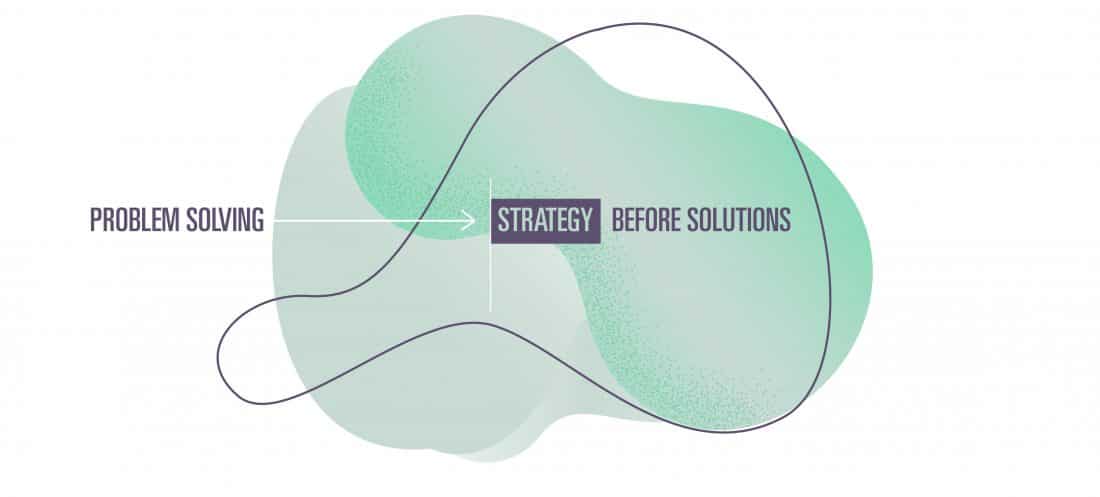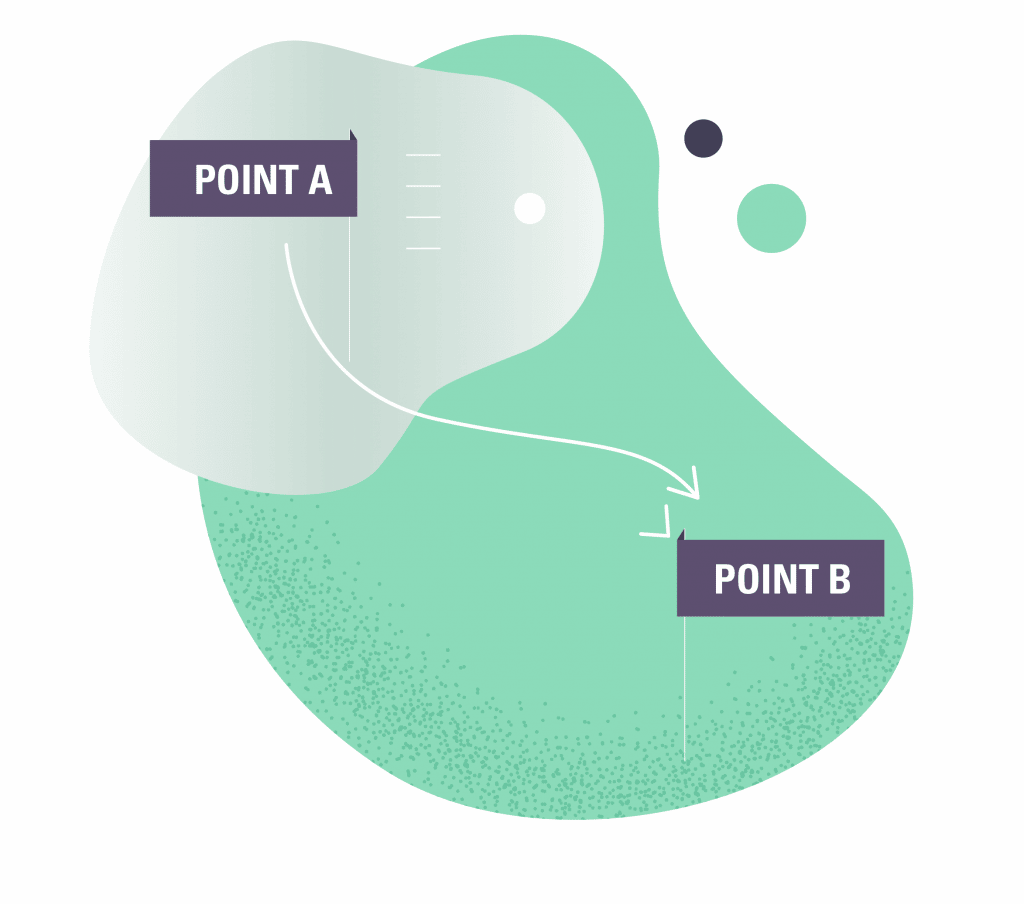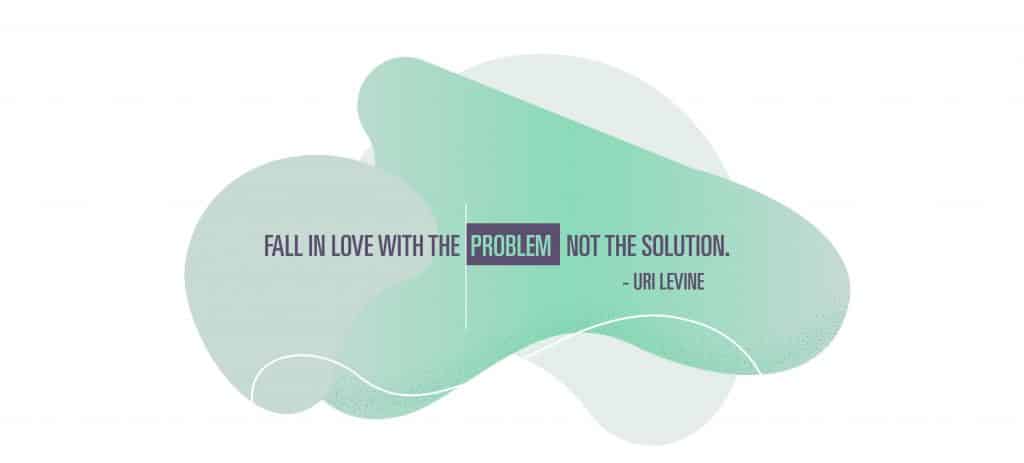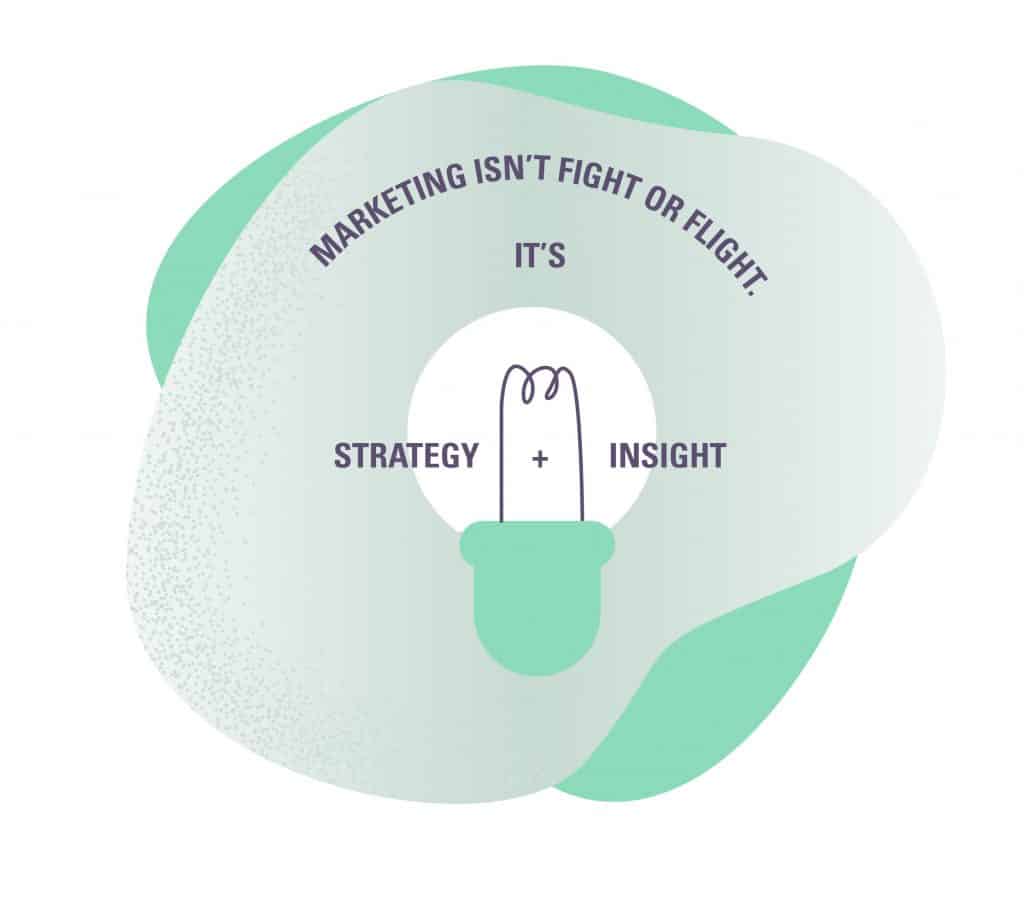
Embracing our problems before jumping to solutions
This is the first blog from our SVP of Creative + Branding, Amy Small, in an ongoing series about Strategy, Psychology, and the Mindfulness of (Nonprofit) Marketing.
—
It’s human nature to search for answers. When something comes up that’s uncomfortable or challenging in our work or our personal lives—whether it’s a relationship with a colleague or family member, an idea that questions our assumptions or beliefs, or a roadblock we hit in trying to achieve our social mission—there’s a tendency to want to find a way to solve it as quickly and easily as possible. From our earliest days, we’re taught that we’re wired to think this way for the sake of our mental and physical survival: we see a perceived threat or roadblock to reaching a goal, and our minds are instantly triggered to figure out a way to either avoid it or overcome it. No time for simply sitting in the discomfort, or untangling the deeper root cause of the problem itself—just spring into action to find a solution, and do whatever it takes to get it done.
We have this instinct for a reason. If you were walking in the woods and came face to face with an angry bear, you wouldn’t sit down on the nearest tree stump to ponder what the bear might be thinking, why it’s angry, what it’s looking for, or how you might redirect its energy away from harming you into something more productive…like foraging for berries or searching for honeypots. Your fight-or-flight instinct would immediately kick in, and as quickly as possible, you’d hightail it out of there to save your own life. (From a neuroscience perspective, this is your amygdala taking over your actions based on emotions like fear and anxiety, and drowning out your prefrontal cortex, which is the part of your brain that does deeper rational thinking and analysis. In a bear situation…it makes perfect sense.)
But there’s a significant flaw with bringing this survivalist, fight-or-flight mindset to our nonprofit marketing efforts:
While our bigger-picture mission may involve finding solutions to life-or-death situations for the individuals, environments, and communities we serve, there is hardly ever an instance where, if we don’t find the first and fastest answer to a perceived marketing problem—for example, not having enough social engagement, not getting enough email signups, not having the best website navigation—that the health or impact of our organization’s work as a whole is immediately threatened. We have TIME to think, to ask questions, to analyze. But we typically don’t.
You might argue this point. “If we don’t get more donors or launch this new campaign RIGHT NOW, how will we keep our doors open to fulfill our mission? These marketing problems ARE life and death! We need solutions NOW!” (Cue “Charlie and the Chocolate Factory” song here.)
But here’s where I want to challenge you, and our entire nonprofit sector, to think about our work a little differently:
If we believe that getting more email signups is the core and most immediate problem we’re trying to solve—essentially, the bear that’s standing right in our faces—then we instantly jump to tactical solutions, like building new social ads or creating new form fields on our website.

But what we’ve missed is the opportunity to think, to analyze, and to dig deeper into the problem—which is the only way we’re able to uncover the root of WHY we’re having trouble getting email signups in the first place.
You’re not alone in taking this outcome-driven path to solving marketing challenges. In fact, you’ve done what nearly every organization, and every agency, for that matter, has been typically conditioned to do. We cling to the first and fastest solution that comes to mind because it seems to be the most effective way to get from point A to point B. Why spend more time, energy, and budget digging deeper, when there’s a perfectly good option right in front of our noses?
There’s a name for this way of thinking in psychology: the Einstellung Effect. Essentially, it describes our lack of ability to come at a problem with fresh ideas because we believe we already “know” what to do based on previous experience. And it applies to things in our everyday lives, not just our nonprofit work. By taking the path of least resistance (or habitual repetition) to solve our surface-level problems without digging deeper to uncover their root causes, or even explore other possible ways to address them, we’re ultimately selling ourselves and our missions short.
For anyone who has ever dabbled in mindfulness, this concept is nothing new. One of my favorite authors and teachers, Pema Chodron, talks about the humbling experience of “realizing there’s never just one solution to a problem” in her book Start Where You Are. The core of this lesson (and a fundamental principle of having a better relationship with yourself and the world around you), is exactly the same as what’s explored in the Einstellung effect: we have to “open our mind so that each situation is completely fresh.” If we don’t, we end up getting stuck. And that’s where progress stalls.
There’s a similar sentiment in the business world that I can’t quite attribute to any one source, because it’s been cited by cited by many successful leaders, including Waze Founder Uri Levine, and is one of the basic principles of the Lean Startup Approach:

Fall in love with the problem, not the solution.
When we hold on too tightly to an immediately accessible solution, we miss out on discovering more in-depth ideas, information, insights, connection points, and yes—even other foundational problems—that may be far more instrumental in helping us reach our long term impact goals.
It’s a little bit like what might happen if you noticed that termites had started eating away the wood from around your home. The quickest and easiest solution would be to simply putty and paint over the rotten places, and call it a day. But that’s not what you’d do. You’d hire an expert to help you discover the root source of the termites—figure out why they’re invading and where they’re coming from—before you decide on the best plan of action to address them.

The same principles of thinking apply to our nonprofit marketing work. If we shift our response from fight-or-flight to strategy and insight; if we open our eyes and our minds to every situation as though it were fresh; and if we spend more time falling in love with the problem before jumping to an immediate solution, we’ll have a far better understanding of what we need to truly drive change—not just in our marketing efforts, but in our pursuit of creating better, brighter, more equitable world for all.
Of course, I recognize that all of this is easier said than done. But along with working with an agency partner who can provide the balance of issue understanding, fresh curiosity, and outside objectivity you need to identify and address the root problems, there are some practices and processes that can help build this capacity within your own team and organization, too. I’ll share one of my favorites in the next post in this series. Check out the next post here.